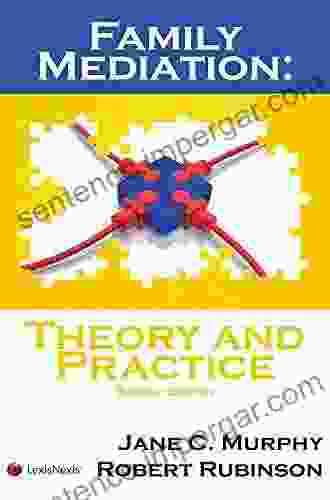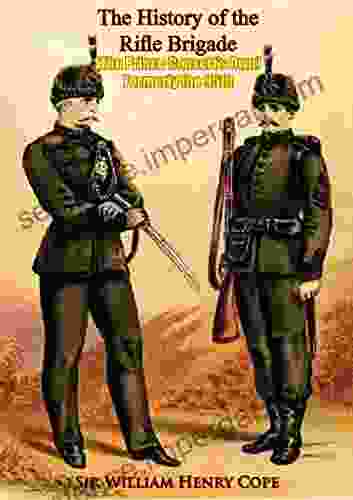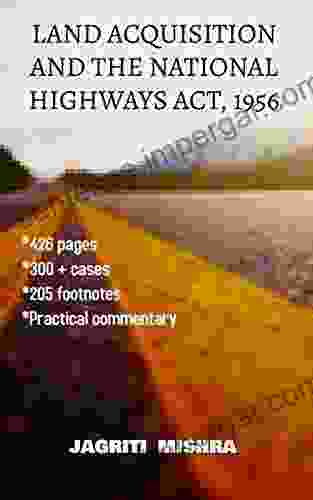Family Mediation Theory And Practice: A Comprehensive Guide to Resolving Conflict and Building Harmony

: The Significance of Family Mediation
In the tapestry of human relationships, family holds a central place. It is within the familial bond that we find love, support, and a sense of belonging. However, the complexities of family life can sometimes give rise to conflicts and misunderstandings that strain these bonds. Family mediation emerges as a beacon of hope, offering a structured and impartial platform for resolving disputes and fostering harmony within the family unit.
5 out of 5
| Language | : | English |
| File size | : | 837 KB |
| Text-to-Speech | : | Enabled |
| Screen Reader | : | Supported |
| Enhanced typesetting | : | Enabled |
| Word Wise | : | Enabled |
| Print length | : | 308 pages |
This comprehensive guide to family mediation theory and practice provides a roadmap for professionals and individuals seeking to navigate the intricacies of family conflict resolution. Drawing upon a wealth of research and practical experience, the book delves into the foundational principles, techniques, and ethical considerations that underpin effective mediation practice.
Chapter 1: Theoretical Underpinnings of Family Mediation
Understanding the theoretical framework that informs family mediation practice is essential for effective intervention. This chapter explores the key theories and concepts that shape the field, including communication theory, conflict theory, and systems theory. By grasping the theoretical underpinnings, practitioners gain a deeper appreciation of the dynamics of family conflict and the strategies necessary to facilitate positive outcomes.
Key Concepts Covered:
- Circular causality and feedback loops in family systems
- The role of communication patterns in conflict escalation
- The impact of family roles and expectations on conflict
- Power dynamics and their influence on family relationships
Chapter 2: The Family Mediation Process
The family mediation process is a carefully structured and phased approach that guides disputants towards constructive conflict resolution. This chapter provides a detailed overview of the mediation process, from intake and assessment to the development of a settlement agreement. It highlights the essential steps involved, such as establishing rapport, facilitating communication, and managing emotions.
Key Steps Explored:
- Intake and assessment of the conflict
- Opening the mediation session and establishing ground rules
- Exploring the perspectives and interests of each party
- Facilitating constructive communication and negotiation
- Developing and formalizing a settlement agreement
Chapter 3: Techniques for Effective Family Mediation
Family mediators employ a wide range of techniques to facilitate productive dialogue and promote understanding. This chapter examines the most effective techniques used in family mediation, from active listening and reframing to circular questioning and caucuses. Practitioners gain practical guidance on how to apply these techniques in various conflict situations.
Essential Techniques Discussed:
- Active listening and reflective communication
- Reframing and reframing exercises
- Circular questioning and systemic interviewing
- Caucuses and separate sessions
- Reality testing and goal setting
Chapter 4: Ethical Considerations in Family Mediation
Ethical conduct is paramount in family mediation, as mediators have a profound impact on the lives of those they serve. This chapter addresses the ethical principles and guidelines that guide family mediators, ensuring that they practice with integrity and respect for all parties involved. It explores issues such as confidentiality, impartiality, and potential conflicts of interest.
Ethical Principles Explored:
- Confidentiality and the protection of privacy
- Impartiality and neutrality in mediation
- Conflicts of interest and managing potential biases
- Cultural sensitivity and respect for diversity
- Ethical decision-making in complex cases
Chapter 5: Applications of Family Mediation
Family mediation has diverse applications, extending beyond traditional family disputes. This chapter examines the use of family mediation in various settings, including divorce and separation, child custody and visitation, and intergenerational family conflicts. It highlights the unique challenges and opportunities presented in each context, providing guidance on tailoring mediation strategies to specific needs.
Applications Explored:
- Family mediation in divorce and separation
- Child custody and visitation mediation
- Intergenerational family mediation
- Family mediation in blended families
- Mediation for families with special needs
: The Transformative Power of Family Mediation
Family mediation is a powerful tool for transforming conflict and restoring harmony within families. This guide has provided a comprehensive exploration of the theory and practice of family mediation, empowering professionals and individuals with the knowledge and skills necessary to navigate the complexities of family conflict resolution.
By embracing the principles and techniques outlined in this book, mediators and disputants alike can harness the transformative power of family mediation, fostering healthy communication, building bridges of understanding, and creating lasting solutions that strengthen family bonds.
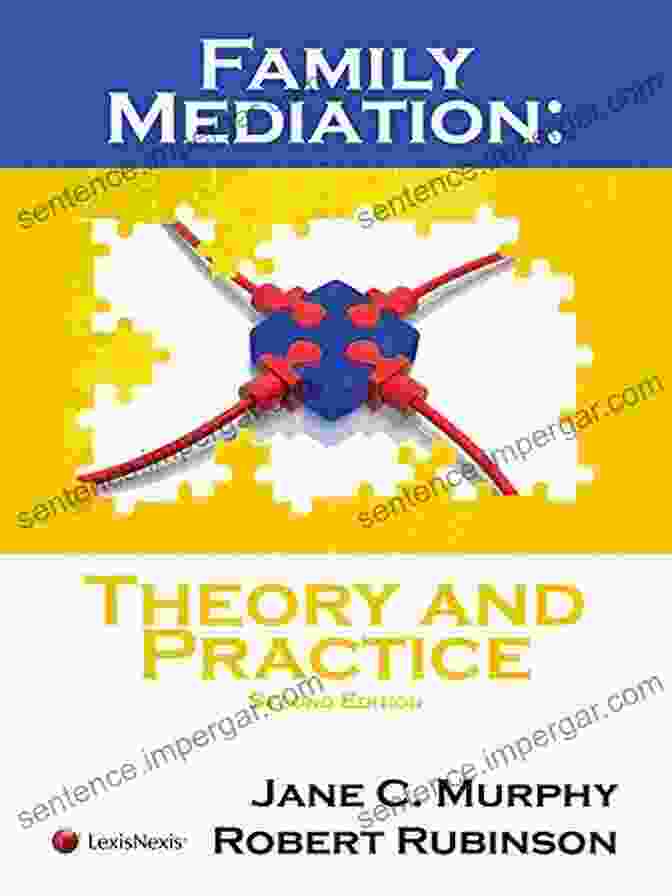
Free Download your copy of "Family Mediation Theory And Practice" today and embark on the journey towards conflict resolution and family harmony.
5 out of 5
| Language | : | English |
| File size | : | 837 KB |
| Text-to-Speech | : | Enabled |
| Screen Reader | : | Supported |
| Enhanced typesetting | : | Enabled |
| Word Wise | : | Enabled |
| Print length | : | 308 pages |
Do you want to contribute by writing guest posts on this blog?
Please contact us and send us a resume of previous articles that you have written.
 Book
Book Novel
Novel Page
Page Chapter
Chapter Text
Text Story
Story Genre
Genre Reader
Reader Library
Library Paperback
Paperback E-book
E-book Magazine
Magazine Newspaper
Newspaper Paragraph
Paragraph Sentence
Sentence Bookmark
Bookmark Shelf
Shelf Glossary
Glossary Bibliography
Bibliography Foreword
Foreword Preface
Preface Synopsis
Synopsis Annotation
Annotation Footnote
Footnote Manuscript
Manuscript Scroll
Scroll Codex
Codex Tome
Tome Bestseller
Bestseller Classics
Classics Library card
Library card Narrative
Narrative Biography
Biography Autobiography
Autobiography Memoir
Memoir Reference
Reference Encyclopedia
Encyclopedia Jane H Hill
Jane H Hill Jan Slimming
Jan Slimming Jean H Baker
Jean H Baker Jean Baudrillard
Jean Baudrillard Janay Brun
Janay Brun James W Loewen
James W Loewen Jason Randall
Jason Randall Jane Hampton Cook
Jane Hampton Cook Jeanne Safer
Jeanne Safer James E Perone
James E Perone James J Nedumpara
James J Nedumpara James H Mcmillan
James H Mcmillan Janet Sharp Hermann
Janet Sharp Hermann James P Delgado
James P Delgado Jay Belsky
Jay Belsky Jay Hasbrouck
Jay Hasbrouck Jane Stern
Jane Stern James Bernard Murphy
James Bernard Murphy James Luscombe
James Luscombe James O Farlow
James O Farlow
Light bulbAdvertise smarter! Our strategic ad space ensures maximum exposure. Reserve your spot today!

 Robert Louis StevensonHeroes and Villains: Unlocking the Stories of Staffordshire Figures
Robert Louis StevensonHeroes and Villains: Unlocking the Stories of Staffordshire Figures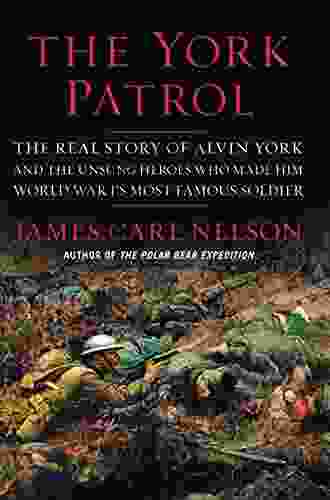
 Houston PowellThe Real Story of Alvin York and the Unsung Heroes Who Made Him World War I's...
Houston PowellThe Real Story of Alvin York and the Unsung Heroes Who Made Him World War I's...
 Arthur Conan DoyleEssays On Magick Tantra And The Deconditioning Of Consciousness: A Journey...
Arthur Conan DoyleEssays On Magick Tantra And The Deconditioning Of Consciousness: A Journey... Samuel Taylor ColeridgeFollow ·19.2k
Samuel Taylor ColeridgeFollow ·19.2k Carter HayesFollow ·6.1k
Carter HayesFollow ·6.1k Harry HayesFollow ·19.2k
Harry HayesFollow ·19.2k Brian BellFollow ·6.5k
Brian BellFollow ·6.5k Anton FosterFollow ·5.1k
Anton FosterFollow ·5.1k Wesley ReedFollow ·2.8k
Wesley ReedFollow ·2.8k Francis TurnerFollow ·4.3k
Francis TurnerFollow ·4.3k Ed CooperFollow ·4.8k
Ed CooperFollow ·4.8k

 Jacob Foster
Jacob FosterPrinciples and Persons: The Legacy of Derek Parfit
Derek Parfit's 1984 book,...

 Leo Mitchell
Leo MitchellPartners For Life: Raise Support For Your Missionary Work...
Are you a missionary or ministry leader...
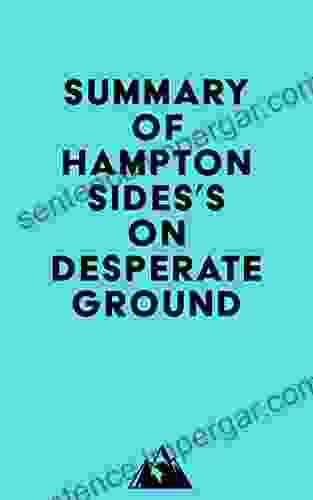
 Blake Kennedy
Blake KennedyOn Desperate Ground: A Gripping Account of World War II's...
Hampton Sides' "On...

 Duane Kelly
Duane KellyCriminal Minds Sociopaths Serial Killers And Other...
In the realm of criminology,...

 Craig Blair
Craig BlairHome Repair: The Ultimate Guide to Fix, Maintain, and...
Welcome to the...

 Elmer Powell
Elmer PowellThe Organic Grower Guide to Mycorrhizae Science for...
Unlock the Secrets of Soil...
5 out of 5
| Language | : | English |
| File size | : | 837 KB |
| Text-to-Speech | : | Enabled |
| Screen Reader | : | Supported |
| Enhanced typesetting | : | Enabled |
| Word Wise | : | Enabled |
| Print length | : | 308 pages |


